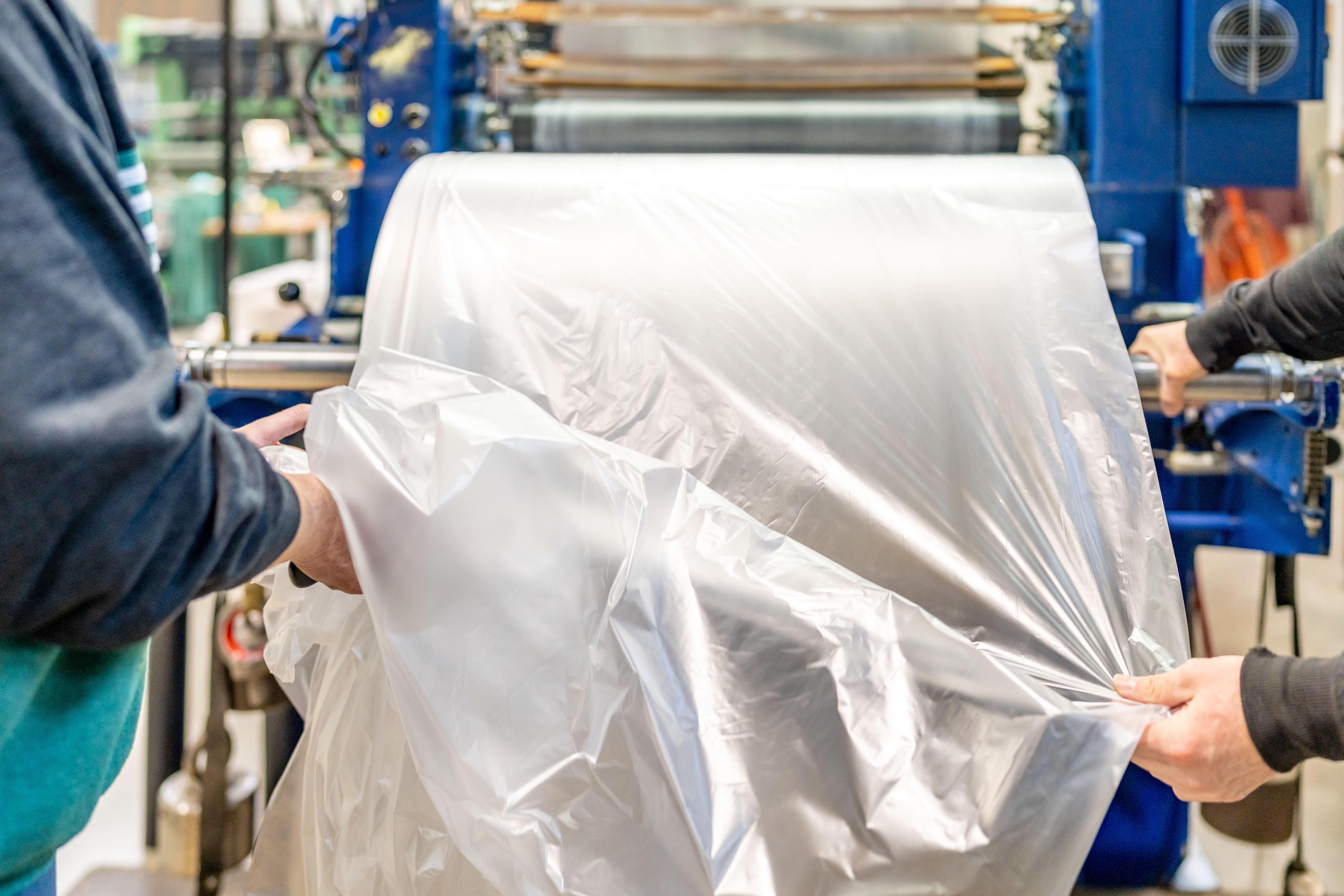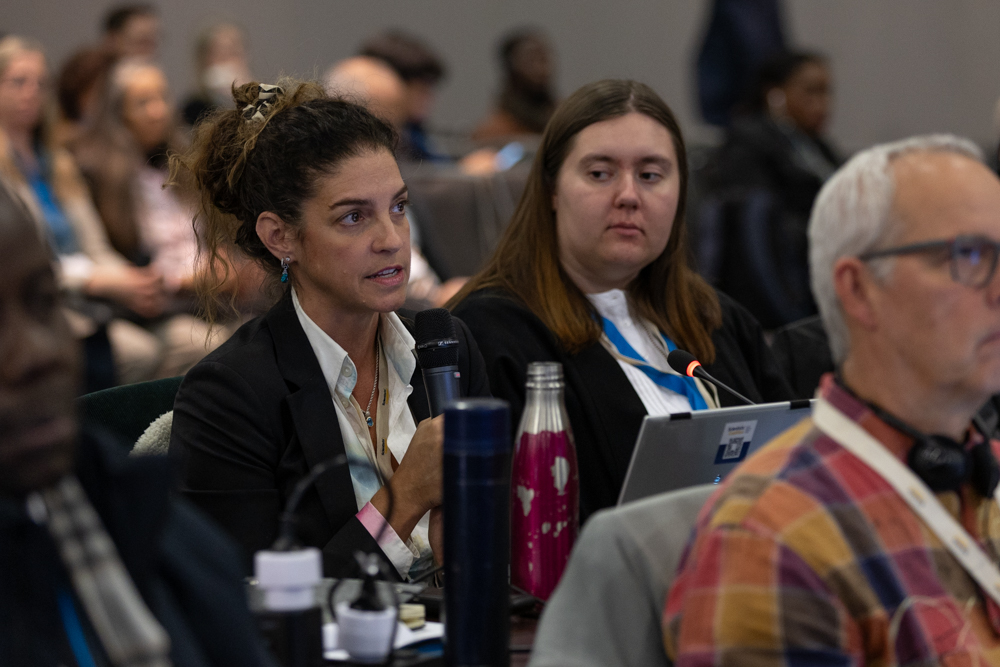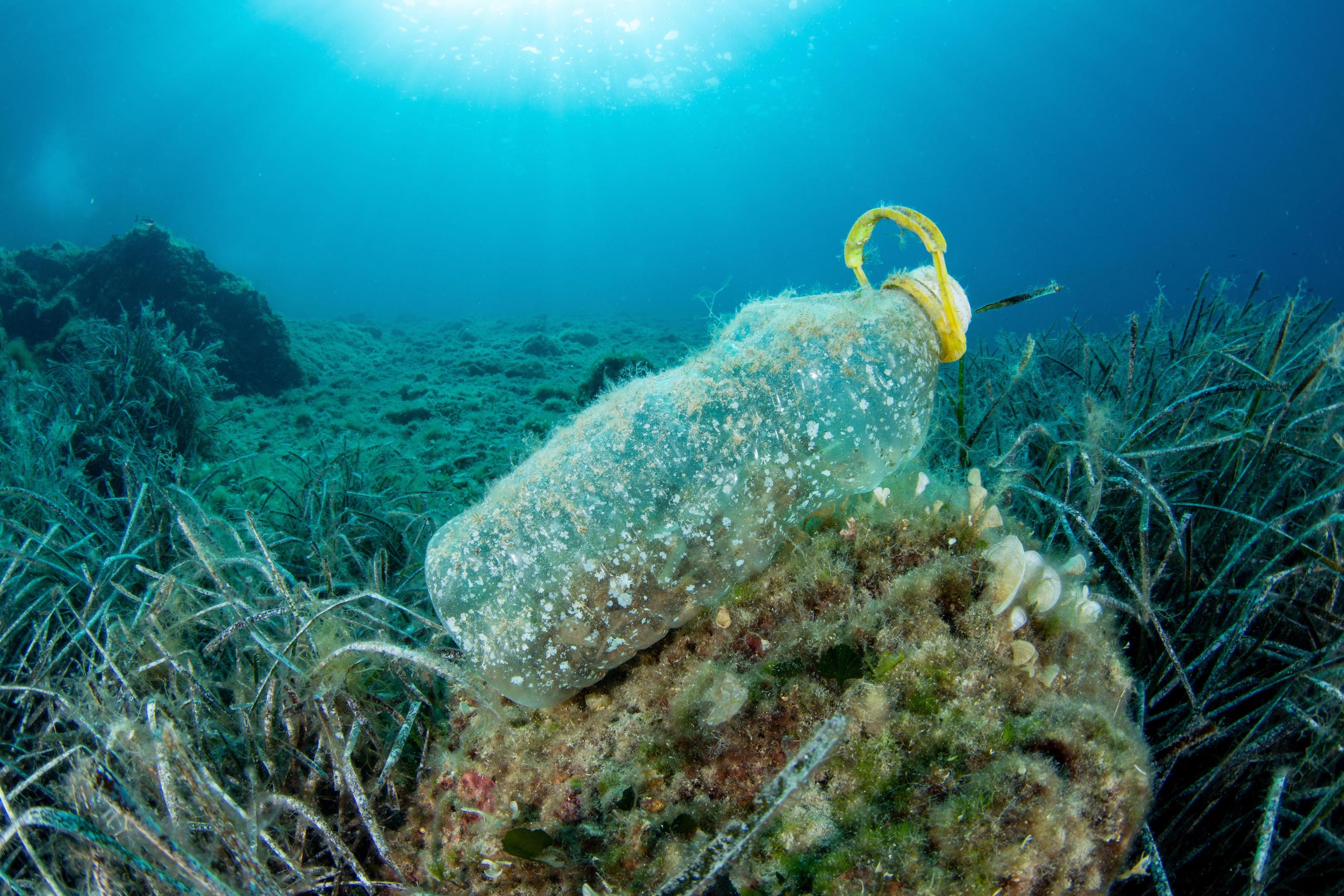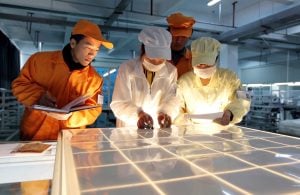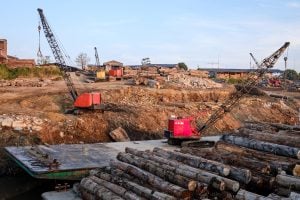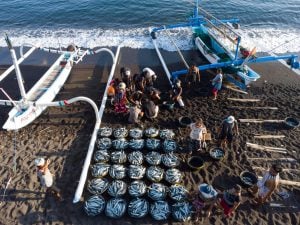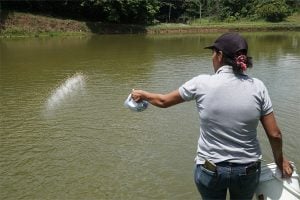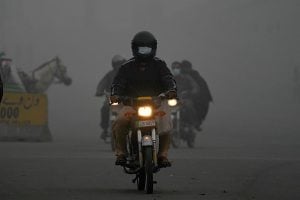When Bethanie Carney Almroth was a child, she used to stand in the kitchen and cut up the plastic rings that bound together her fizzy drinks cans. As a fish lover, she wanted to disarm the packaging that infamously traps and chokes marine animals.
Tackling plastic pollution demands much more than a pair of scissors, but Carney Almroth’s childhood habit foreshadowed her career. She is now an ecotoxicologist at the University of Gothenburg, specialising in microplastics in the marine environment. She analyses their impacts upon fish, and the larger-scale planetary problems caused by this insidious form of modern pollution.
This week, Carney Almroth is attending INC-5, the final negotiations of a global treaty to combat plastic pollution, in Busan, South Korea. As a steering committee member of the Scientists’ Coalition for an Effective Plastics Treaty, she will be co-coordinating a group of more than 60 scientists at the talks.
Here, she tells Dialogue Earth about her hopes for an ambitious and effective treaty. The conversation has been edited for length and clarity.
Dialogue Earth: What happens to microplastics in fish and other animals?
Bethanie Carney Almroth: We showed that if a fish eats plastics, some of the plastic particles can move from the fish’s stomach or gut into the muscle, which humans eat. Chemicals in plastic can also be taken up and distributed throughout an animal’s body. The chemicals might end up in the fish’s liver, the brain or the muscle, depending on the exposure pathways and the kinds of chemicals.
But these chemicals and particles are also in plastic food packaging, causing contamination of food. People often say there’s so much plastic in the oceans, and it’s in fish. But it’s also in all kinds of food that is wrapped in plastic.
Most plastics are made from chemicals that originate from crude oil, coal and natural gas. They consist of large molecules called polymers: chains of many small particles bonded together. The small particles are called monomers.
Producers create different shapes and forms of plastics by adjusting the types of monomers used and modifying the temperature and pressure of processing. They can also add chemicals to tune the molecular structures. The most common polymers in plastics include polyethylene (PE), polyethene (PP), polyvinyl chloride (PVC) and polystyrene (PS).
Are current regulations on chemicals in plastics sufficient?
There are piecemeal bits and pieces of legislation, in this country and that country, on this product, on this chemical. But there’s no global regulation right now. Reports say either 1% or 6% of chemicals in plastics are regulated globally.
The plastic life cycle is very international. The raw materials are extracted in one place, and the monomers are produced in another, and plastics are produced in another. The waste trade sector is also very complicated and messy. A lot of data gaps remain on where these things are going and where they are ending up.
So, we need international regulation to address these problems. Individual countries can’t act on this sort of international, transboundary problem.
What are the most important decisions for Busan?
Chemicals are at the top of my list. There are 16,000 chemicals used in plastics, and 4,200 have hazardous properties. Robust data shows the kinds of chemicals in plastic that cause negative health impacts [in humans]. The fact that we don’t know what chemicals are in products is because no laws demand that.
The other obligation I’d like to see is production reduction. Evidence shows that planetary functions, the climate, and biodiversity are being destabilised by plastics. The fossil fuel industry is seeing a decreased demand for its products as we shift to greener energy. 90% to 99% of plastics are made of fossil fuels. Those industries are planning on ramping up plastic production threefold.
Around 500 million tonnes of plastics were produced in 2022. We can’t triple that. There’s no way our planet and our societies can handle that. No matter what waste management systems you build, we will still have significant plastic pollution unless we reduce production.
Have scientists provided enough input for these talks?
We’re trying really hard. The negotiating process itself did not have a specific mechanism for scientific input. This is why we formed our coalition, Scientists’ Coalition for an Effective Plastics Treaty, to fill that void – some member state delegates don’t have access to experts in analytical chemistry, monomer science, pollution, marine biology, human health, etc.
A lot of science and evidence shows how industry scientists, industry actors and PR campaigners have acted to delay or block policy action. We don’t allow industry-funded scientists to contribute to our documents. We are struggling a bit with getting accredited to attend the meeting, as we often need to be invited to join a delegation. We also need to find funding for our plane tickets and hotels. We also have problems with time. These are things that the industry has. They have money, access and time.
But we’ve been getting there. At the first round of negotiations in Uruguay, there were only five of us. We started this journey as a very small group and have grown in numbers, strength and influence.
Are you hopeful for a good outcome in Busan?
The industry is there, lobbying and communicating. They’re doing what they do. But I’m seeing renewed momentum and enthusiasm among member states for production reduction.
More and more countries have signed the Bridge to Busan Declaration, asking for a plastic production reduction; the Business Coalition for a Global Plastics Treaty signed on to that yesterday. Countries like the US also shifted their policies and are now open to discussing reduction. The countries that are not open to it are greatly outnumbered.
There are things individuals can do, but these problems are systemic and will require systemic change. So, I’m going to South Korea to do everything in my very small power to support the member states that want to do something ambitious, and to arm them with the science they need to make their arguments.
